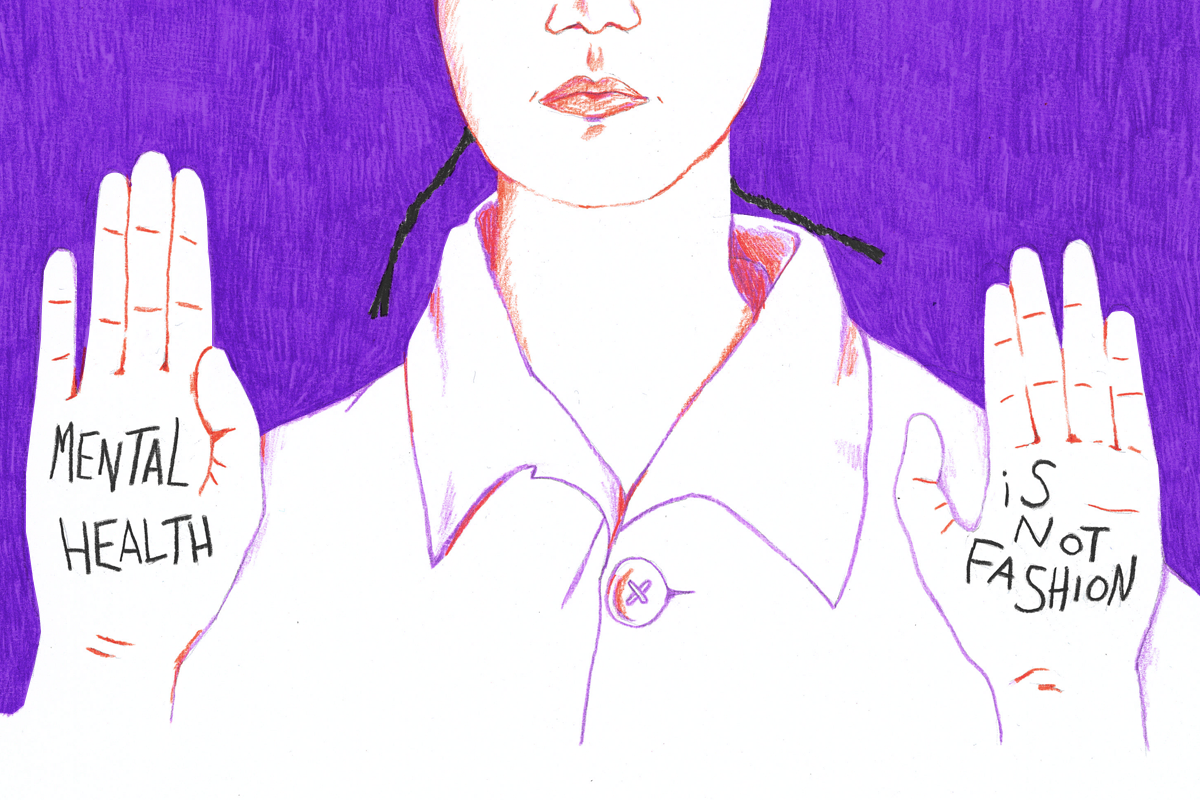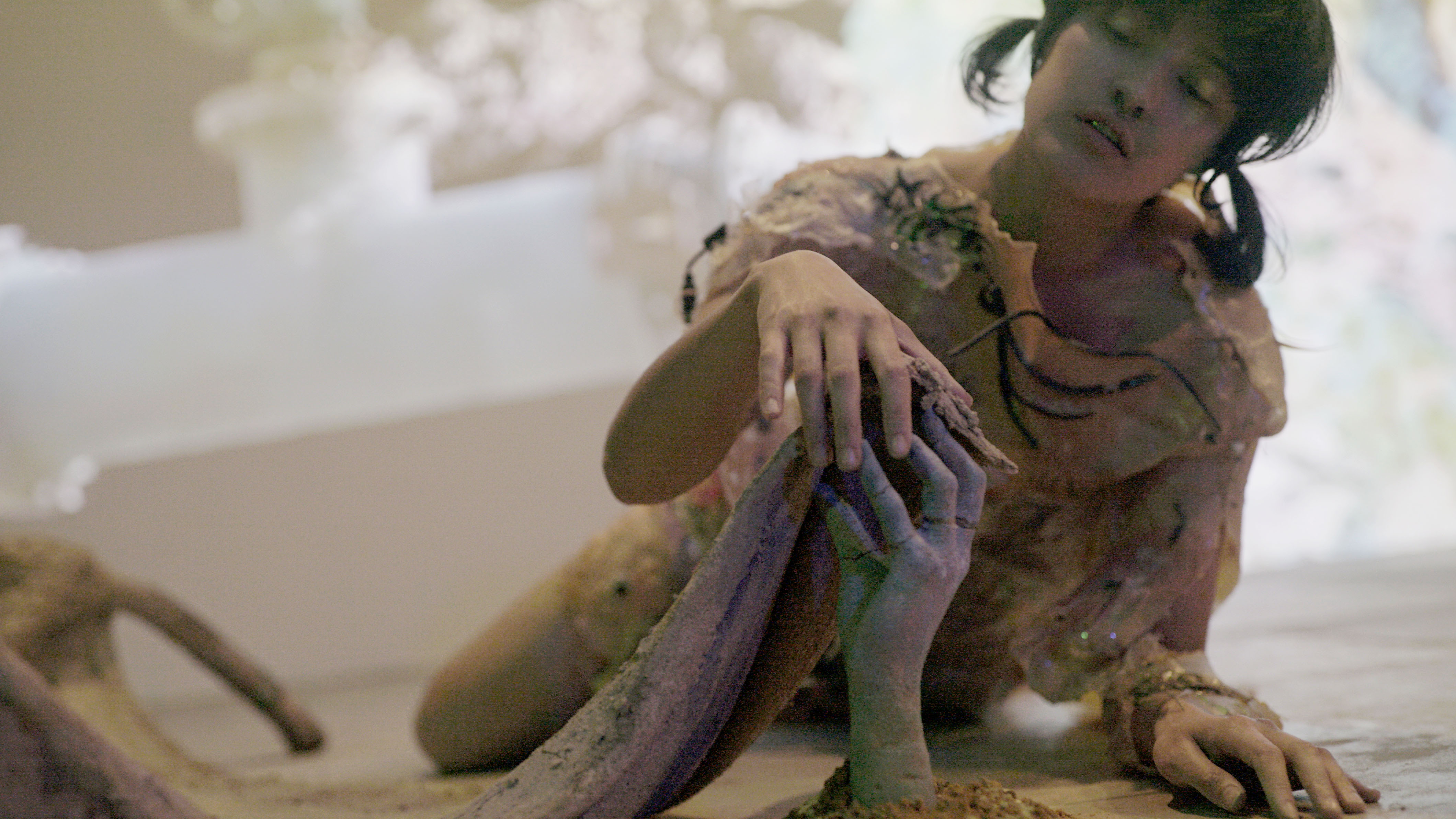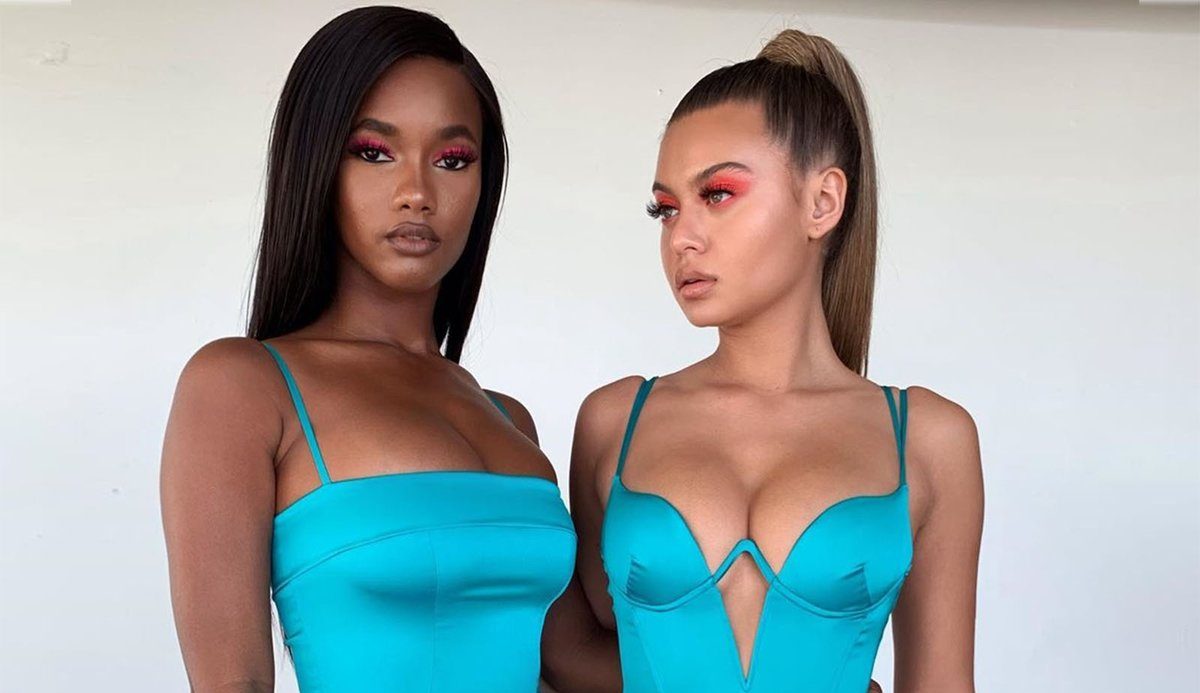
Illustration by Sumena Owen
Trigger warnings: Mental health and self-harm
I’m in a line of about 20 other models. We are all dressed in white clothing, heavy-duty fabric weighs us down, straps and buckles jangle, the uniformity of the line up seeps deep into our consciousness. The backstage manager reads our names aloud again, for the fourth time, to make sure we are all present and in the right order. I hear my name but it seems alien as I look down at my body. The clothes I am wearing seem to be inspired by the uniform of a psychiatric ward and around me models in straitjackets slump against the black curtains, staring into the abyss of the black floor, all of us waiting for our turn to take our place on the conveyor belt.
“How are you feeling?” I ask one model. She rolls her eyes. “I know it sounds bad, but I feel a lil’ bit insane. I feel like we are actually in a mental hospital. I wonder what the press is gonna say about this show?” Other models agreed. We were all dreading the media reaction to Gucci’s creative director Alessandro Michelle’s ideas.
I just wanted to tell them all, “Don’t worry, I got you! I have a secret up my sleeves!” I quite literally did. Moments before, I was in the bathroom, shaking nervously and scrawling biro onto my palms, while a queue of models waited for the one working toilet backstage. I pretended to piss, flush, and realised I couldn’t even wash my hands. I walked past a line of glaring models, who were probably thinking I was unhygienic. I didn’t care. My hands were now armed with the words which have now been seen across the world: “Mental Health Is Not Fashion”.
I was 14 when I signed to my first modelling agency, Select Models, after being scouted at the Clothes Show in Birmingham. I’m from Chester, a small town in the north of England, so only came down to London occasionally for shoots and castings. When I was 17, I was allowed to come to London on my own and go to jobs unaccompanied.
During this time I was also diagnosed with severe anxiety disorder and depression. I regularly self-harmed and the cuts were visible on my skin. I remember going to shoots and covering my arms in concealer and once overhearing the photographer discuss how they’d have to photoshop the scars out. At the time I felt quite alone in these feelings, but depression and anxiety affects one in four people each year. The model lifestyle can seem glamorous, but this occupation does impact mental health and recent studies have shown that models are more likely to develop psychological disorders, while non-profit organisation The Model Alliance reported in 2017 that 68% of models suffer from anorexia, depression or a combination of both.
Now my mental health is stable and I use my art and my music as therapy to express my emotions, I have gotten to the point in my 12 year career where I am only taking jobs that are aligned with my activism and support my main passions. I know my worth and my morals and I don’t do things because a client wants me to. For me, the risk of losing jobs, clout or ties with a big fashion conglomerate like Gucci could never get in the way of standing up for, or writing down, what I believe in. Of course, it is a privileged position to be a model who does not rely on income from the industry as my main bread.
After finding out about the straitjackets a few days before the show and spending hours deliberating and debating with other models about whether we felt it was right to support this imagery in a fashion context. I could have stayed silent, walked off the job, and let another model take my place. But I was raised with a voice and armed with hands whose duty is to heal. For me, to remain silent would be choosing the side of the oppressor.
“I could have stayed silent, walked off the job, and let another model take my place. But I was raised with a voice and armed with hands whose duty is to heal”
Ayesha Tan Jones
A few days before the show, in the lobby of the lush, red-carpeted Gucci Hub in Milan, I found a copy of Gucci’s press statement. Knowing I wasn’t meant to know the show’s concept (they get worried that models might leak top secret info) I ruminated over it. French philosopher Michel Foucault, quoted in the statement, talks of “biopolitics” and the “microphysics of power… a power that legitimises only some existence, confining the others inside a regime of containment and/or invisibility”. Models are often expected to be purely a body to prop up the fabric, our voices muted by the overbearing sirens of capitalism. I chose to not be confined by another person’s regime and rendered invisible. I used the container of the catwalk to be visible and use my voice silently.
The main collection, of which the straitjacket “looks” were a counterpart to, was titled Gucci Orgasmique, and was all about sex. There were powersuits, slip dresses and models bearing whips. In a statement after the show, Gucci said that “The white outfits were a statement for the fashion show and part of a performance, in the sense of setting the context for what followed.” To me it is irrelevant whether the garments were intended for sale or not. We live in a society that thrives off visual trends and fast-paced fashion, and it is irresponsible for one of the world’s largest fashion houses to use imagery which could be read to fetishise mental illness.
The cerulean blue sweater scene from The Devil Wears Prada echoes in my head, when Anne Hathaway’s character Andy snorts as Miranda Priestly (masterfully portrayed by Meryl Streep) deliberates over two similar-looking belts. “It’s sort of comical to think that you’ve made a choice that exempts you from the fashion industry when in fact…” When in fact, brands like Gucci have a duty to use their platform and international reach to promote diversity and inclusion for all, including acknowledging the quarter of the population (of the EU) that suffer from mental illness.
My first time hearing the soundtrack to the show was when we were called into a rehearsal the day before we were set to hit the catwalk. As I stepped onto the moving platform, the sounds of electric shock buzzers, hospital heart monitor beeps and the echoes of women’s screams filled my ears. Tears began to well up in my eyes. I knew that I must use this platform to help spread a message of hope to the millions of people, heroes around the world, who deal with mental health issues and illnesses every day. To the people that society stigmatises, and the people who fashion houses still overlook while they try to convey their concepts.
The metal factory shutters shaped like church windows opened, the set was designed to have an institutional feel. Behind them, a room full of celebrities flown in from all around the world, and a million eyes watching through cameras and live stream. I waited my turn in the line, the backstage hand shouted “go!” and as I stepped onto the moving walkway, hands by my side, I knew I could easily just stay static and let the whole moment pass me by, but the universal life force energy in my palms pulsated and my body acted out the action I had replayed my mind over and over. I rolled up my sleeves and held up two power fists before opening them to reveal my palms. It was a peaceful, non-violent surrender.
This simple action has sparked international conversation and has brought back into the forefront of the media the important conversation around mental health. The image went viral overnight, but the message and our actions must not be lost to the algorithms. Upon receipt of my fee from Gucci I will be donating 100% of it to UK based Mental Health Charities. In my bio on Instagram is an ever-evolving list of international charities and organisations that I encourage people, if you have the resources, to donate to or share.
As I said in my recent Instagram post, share these resources just as “this image of the ‘Gucci model Protests Runway’ has been shared countless times. The Gucci model is just a vessel for a message – a message which is way more important than any clothes, clout or clickbait counts.” We still have a lot of work to do to fight to de-stigmatise mental health, but with continued work and awareness, compassion and understanding, we can collectively heal together.









